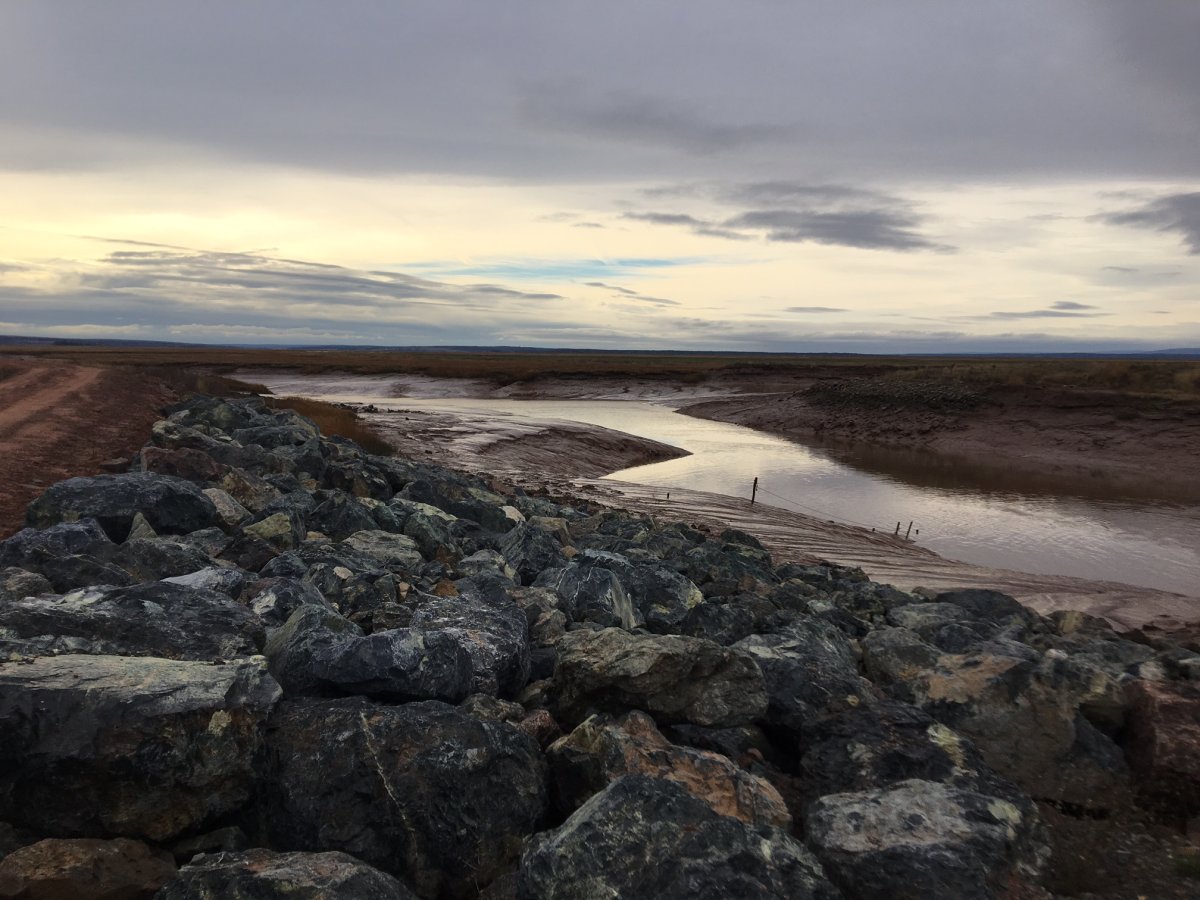Swaths of salt-water marshes in the Maritimes are to be restored, in a bid to help absorb the rising sea levels and storm surges brought on by climate change.

Saint Mary’s University announced today that it will get $1.8-million in federal funds to restore 75 hectares of marshes in the Bay of Fundy.
Project leader Danika van Proosdij says the marshes will create more coastal habitat for marine life, and they will provide a new line of defence against flooding and erosion.
READ MORE: Nova Scotia Nature Trust to protect wetland in Yarmouth county, home to threatened plants
The professor at Saint Mary’s University says this “nature-based strategy” will be accomplished through the realignment and decommissioning of dikes at several sites around the bay.
The project was one of several receiving funding today, including $2.4 million for the Clean Foundation to restoring tidal wetlands on the Nova Scotia shore of the Northumberland Strait, and $1.26 million for the Maritime Aboriginal Peoples Council for habitat restoration work.
Last fall, the mayor of Amherst, N.S., raised concerns about the condition of the historic Acadian dikes and their ability to hold back rising sea levels.
WATCH: Rising sea levels could bring geographic changes to Nova Scotia and New Brunswick

Mayor David Kogon has said sea levels are projected to rise in the Bay of Fundy over the next two decades to the point where the narrow land link between Nova Scotia and New Brunswick will flood even when there is no storm surge.
The area where flooding could occur on the Isthmus of Chignecto includes 20 kilometres of the Trans-Canada Highway, 20 kilometres of CN Rail tracks, 35 kilometres of electricity lines and 35 kilometres of dikes.
- Life in the forest: How Stanley Park’s longest resident survived a changing landscape
- ‘Love at first sight’: Snow leopard at Toronto Zoo pregnant for 1st time
- Buzz kill? Gen Z less interested in coffee than older Canadians, survey shows
- Carbon rebate labelling in bank deposits fuelling confusion, minister says



Comments